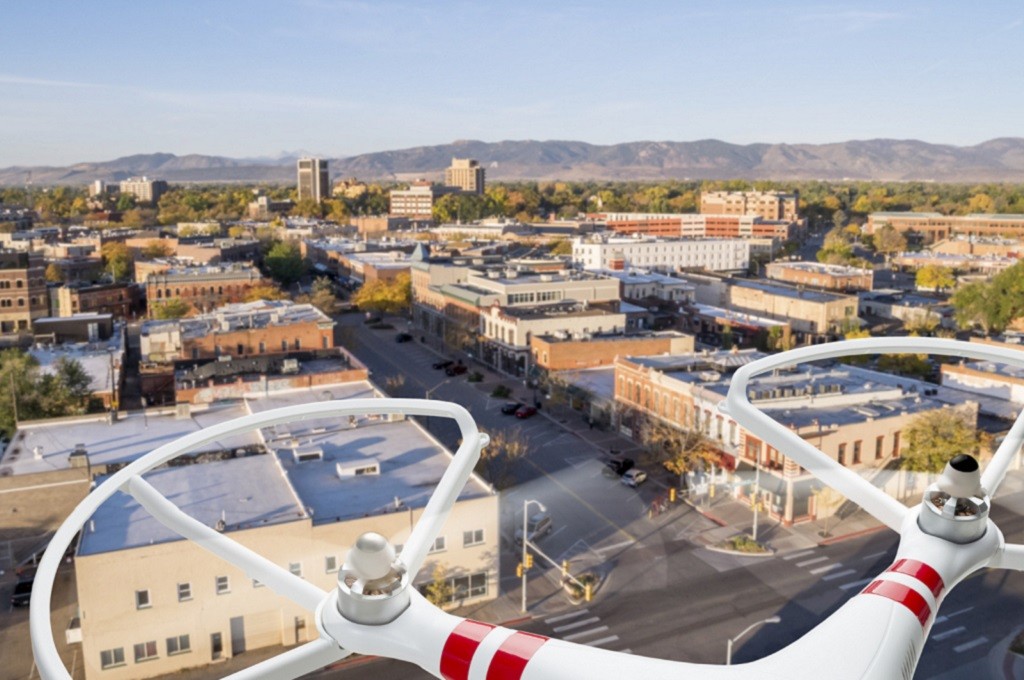Drones have captured the imagination of the public in recent years, and businesses have embraced the possibilities they offer. There is little doubt that drone technology is ready to make its commercial debut: From filmmaking to product delivery to agriculture, we can expect drones to start popping up in many different industries. Commercial real estate is among them.
Plus: Getting smarter about wearable tech
In fact, there is a strong case that commercial real estate is one of the industries that stands to gain the most from drone technology. Drones can help brokers and clients by revealing potential issues with a building or property, examining hard-to-reach areas like roofs and getting a bird’s-eye view of traffic patterns and surrounding environs.
Also: How virtual reality technology can transform CRE marketing
The marketing potential is huge. Check out this drone-assisted tour of an industrial property marketed by Colliers Canada last year:
Practice makes perfect. As you can see, Colliers Canada upped its drone game with this marketing video for Vancouver’s largest boarding school property.
Canadian marketers benefit from a clear legal framework for commercial drone use, which has been permitted in Canada since 1996. The governmental agency Transport Canada even has a website with an easy-to-follow FAQ section and infographics. Way to go, Canada! Until very recently, the legal status of commercial drones in the United States has been far less defined.
The Federal Aviation Administration (FAA) has dragged its feet on issuing rules for commercial drone use for years. It wasn’t until 2013, when President Obama signed the FAA Modernization and Reform Act, that the agency began to take action. Obama directed the FAA to produce rules before Sept. 2015. While the deadline approached, individual states began to propose legislation, placing clouds in an otherwise clear sky. In 2013, the ACLU tracked proposed legislation relating to drone usage in 43 states.
This week, the FAA delivered proposed rules for commercial drone use in the United States. Initial reactions from drone enthusiasts were positive. But as the news made its way to drone operators in individual industries, the response became more tepid. The regulations put forward fall flat for drone delivery, and farmers were disappointed.
So, how will the proposed rules affect commercial real estate? The jury is out.
CRE pros looking to get into drone operations should be happy to know that they won’t need to obtain a regular pilot’s license or take an inflight exam. As long as they are operating a drone under 55 pounds, they will only have to apply for certification and pass a written test. No biggie, right?
Well, not so fast. Unfortunately, some of the proposed rules take a pretty big bite out of drone potential. For starters, commercial drones won’t be allowed to fly over 500 feet. Drones also won’t be allowed to fly over anyone except those persons involved in the operation, and drones won’t be allowed to venture out of sight of the operator. Taken as whole, these proposed rules effectively preclude the commercial use of drones in any urban area, and they certainly curtail some of the more ambitious surveying of properties of which drones are capable.
Have no fear, early adopters of drone tech for CRE: All is not lost. Five hundred feet is still pretty high, and there are plenty of places where you can film without anyone beneath your drone (many industrial applications should still be fine, for example). Also, these are merely proposed rules. The FAA is taking comments on the rules for a 60-day window. Make your voice heard!
Even though commercial drone use for CRE still has some challenges ahead, at least we now know what the FAA has in mind for the future. The FAA’s elevated perspective on the shifting legal landscape of drone tech is very welcome — if slightly overdue.
To learn more about the proposed drone rules, read the press release and get a summary from the FAA.
Want even more? Read the complete notice of proposed rulemaking.
UPDATED MAY 26, 2015:
On May 6, 2015, the FAA signaled a softening on commercial drone regulation by creating a pilot program which will allow three companies to operate drones beyond line of sight.
On May 12, 2015, Sen. Cory Booker, D-N.J., and Sen. John Hoeven, R-N.D., introduced legislation to establish interim rules for commercial drone use while the FAA does its due diligence.
Tony White has spent decades exploring discourse within online communities, and he writes about social media and digital innovations in real estate. Send him tips or questions at Tony.White@Colliers.com or via Twitter.

 Colliers Insights Team
Colliers Insights Team

 Anjee Solanki
Anjee Solanki
 Lex Perry
Lex Perry